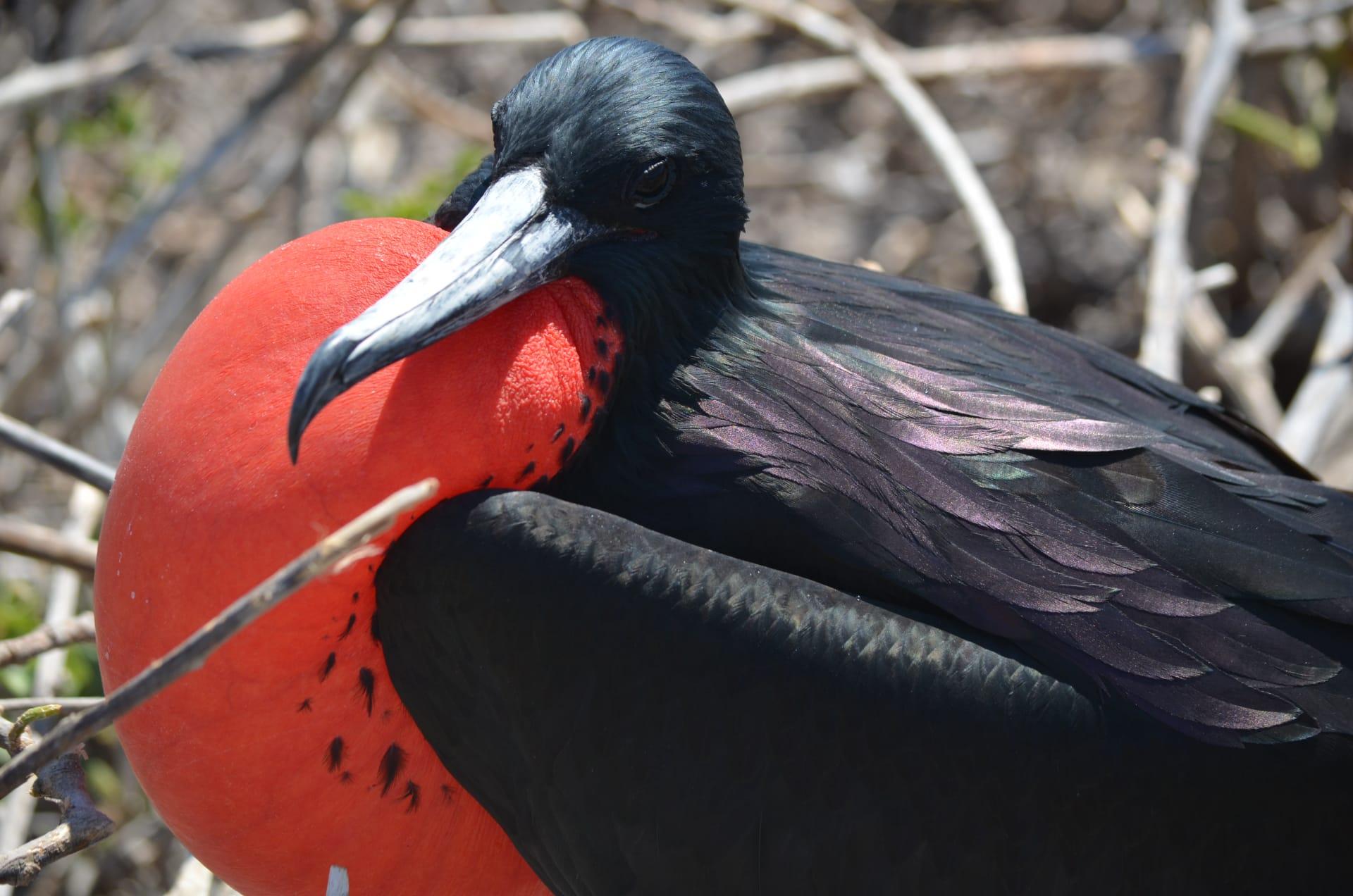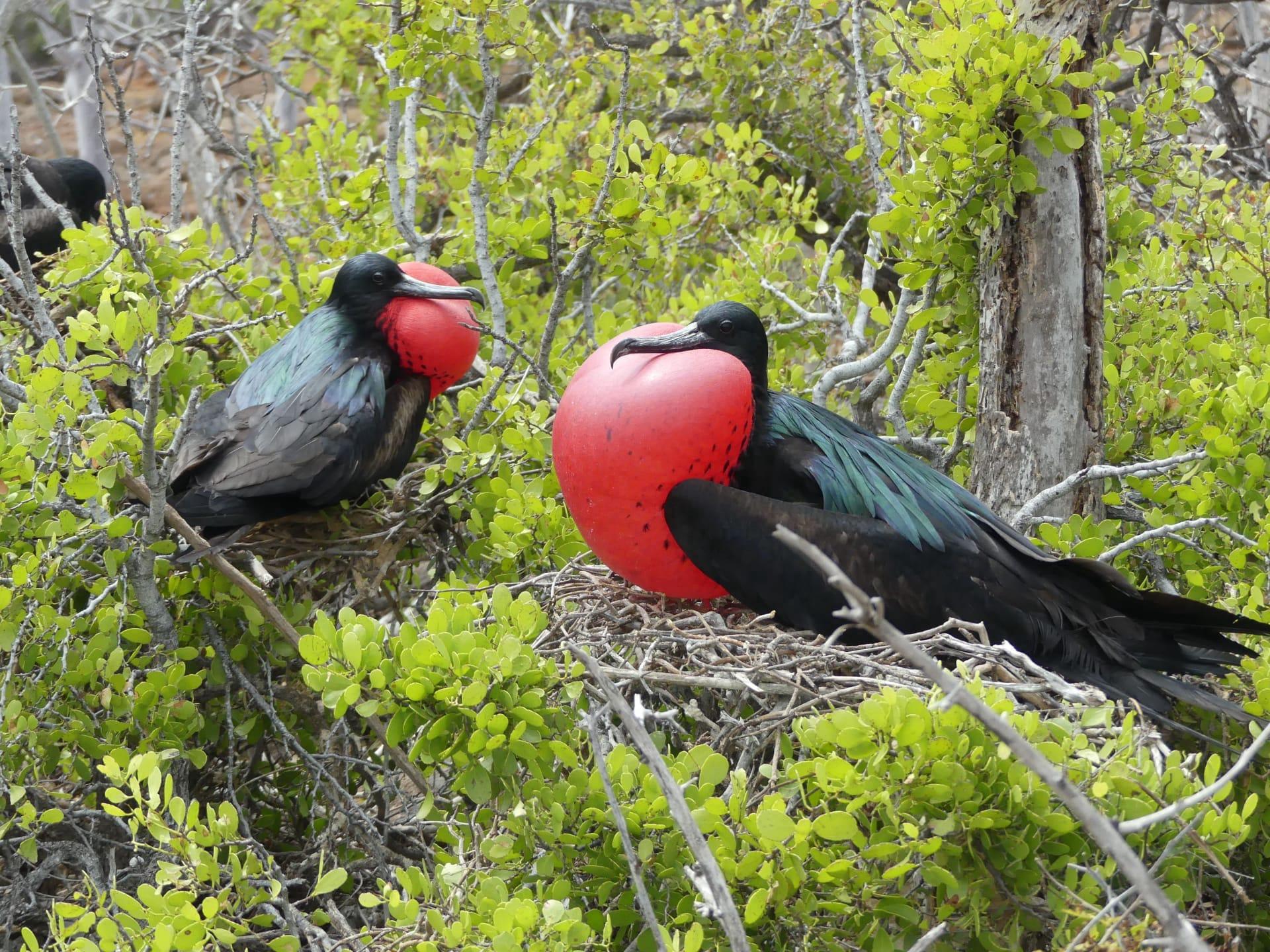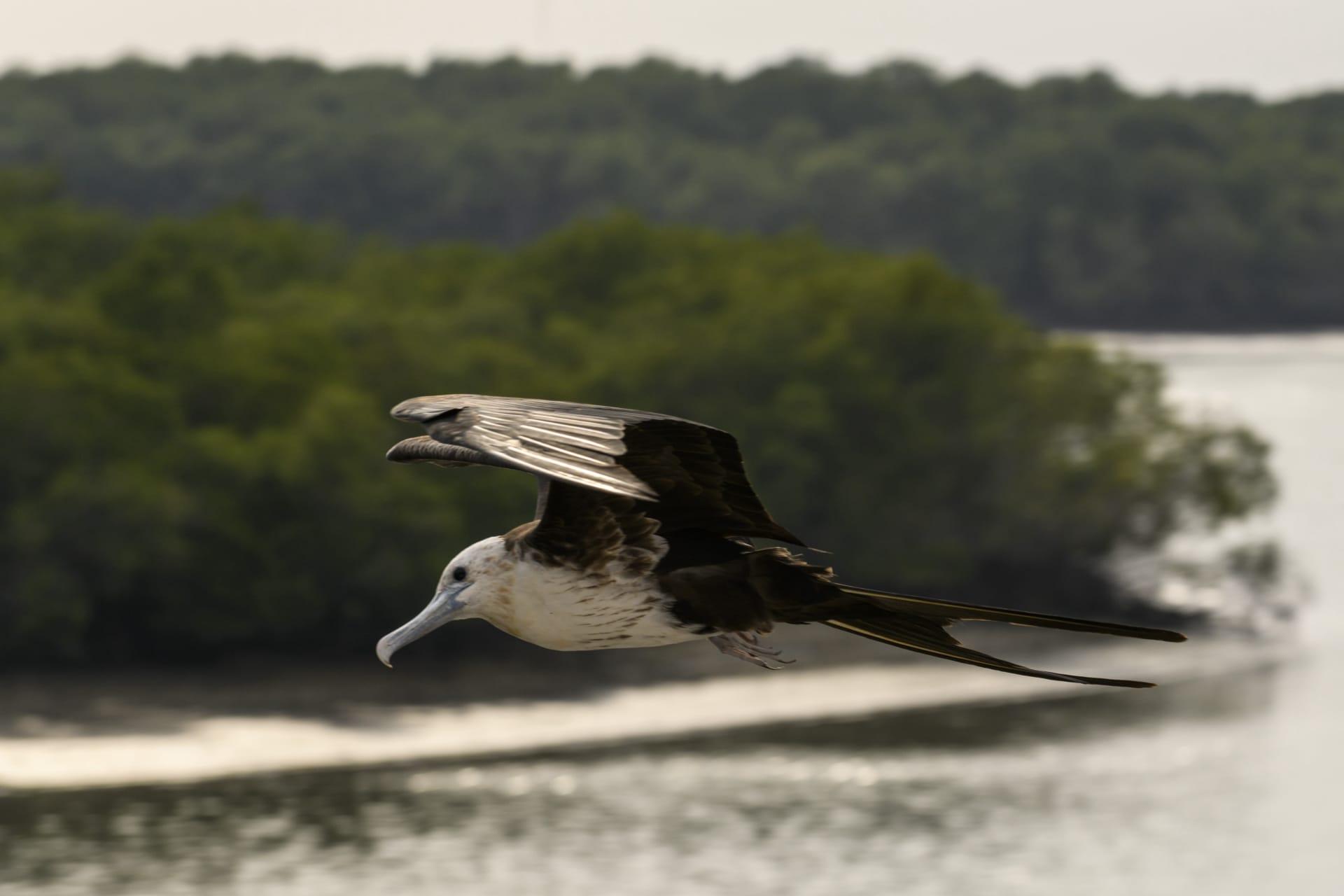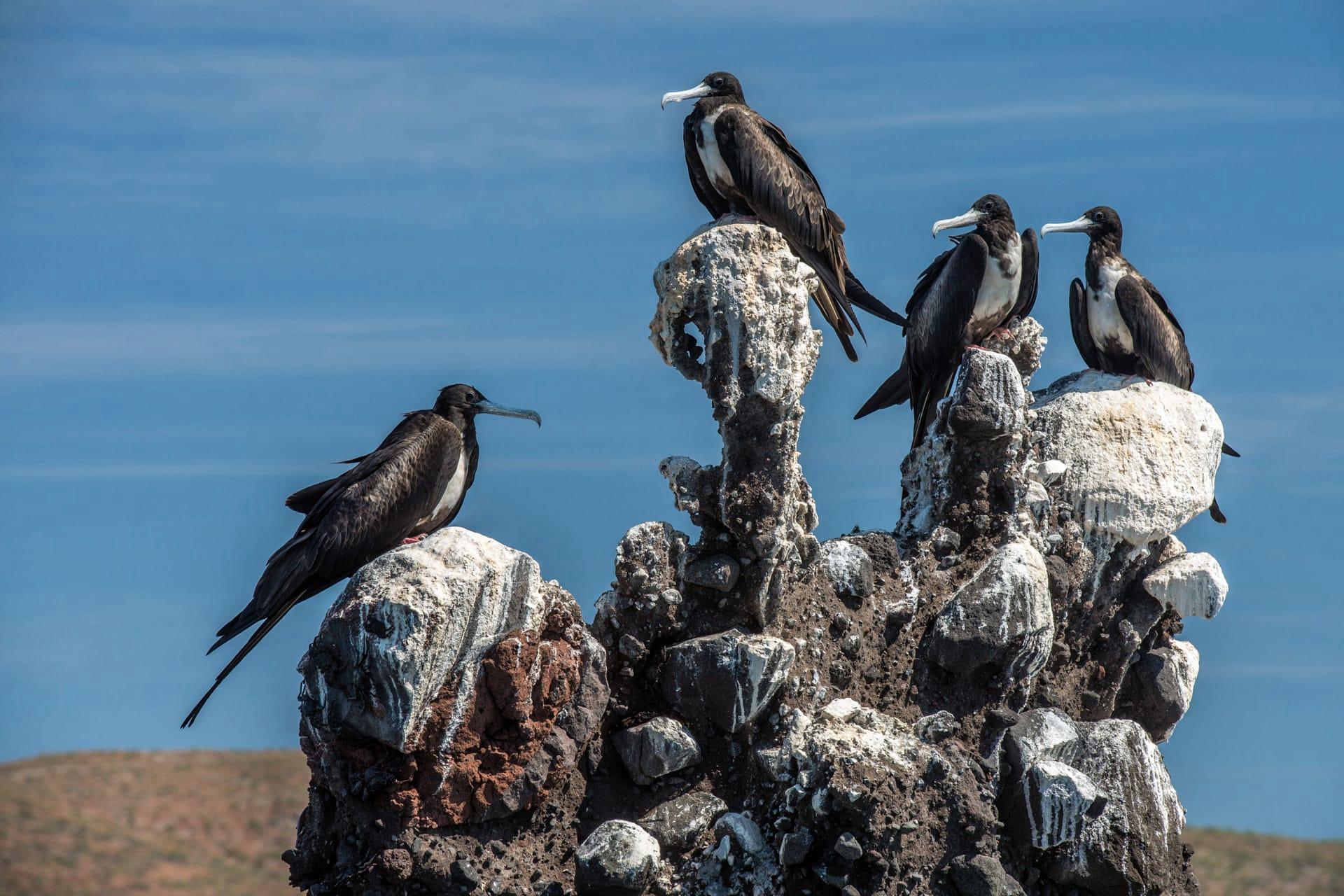Frigatebird
- Home /
- Mini Encyclopedia /
- Animal /
- Frigatebird
1
Frigatebirds, scientifically known as Fregatidae, are a small family of seabirds comprising five species. These include the Magnificent Frigatebird (Fregata magnificens), the Ascension Frigatebird (Fregata aquila), the Lesser Frigatebird (Fregata ariel), the Great Frigatebird (Fregata minor), and the Christmas Frigatebird (Fregata andrewsi). Each species has unique characteristics, yet they all share certain traits like a long hooked bill and a deeply forked tail. Their wings are long and narrow, ideally suited for an extraordinary flying ability.
Frigatebirds are predominantly found in tropical and subtropical oceans. The Magnificent Frigatebird, for instance, is widespread in the tropical Atlantic, breeding in colonies in the Caribbean and along the coasts of the Americas from Mexico to Ecuador and Brazil. The Great Frigatebird, on the other hand, is commonly seen across the Pacific and Indian Oceans, notably around Hawaii, Australia, and Madagascar. Lesser Frigatebirds prefer the region from the Indian Ocean to the central Pacific, while Ascension and Christmas Frigatebirds are more localized, with the former breeding exclusively on Ascension Island and the latter only on Christmas Island.

2
Question: Do frigatebirds, given their impressive size, prey on large fish and marine mammals?
Answer: Contrary to what one might expect, frigatebirds do not typically hunt large marine animals. Despite their imposing wingspan, which can reach up to 7.5 feet, they have relatively light bodies, weighing between 1.4 and 3.6 pounds. This adaptation is crucial for their distinctive flying abilities. Frigatebirds are opportunistic feeders, mainly catching small fish and squids from the ocean's surface. They are also known for their kleptoparasitic behavior, meaning they often snatch food from other seabirds in mid-air. This unique feeding strategy allows them to expend less energy hunting and more on soaring high in the sky.

3
Frigatebirds have adapted remarkably to their oceanic environment. One of their most notable survival strategies is their exceptional flying skill. They can stay airborne for weeks, covering hundreds of miles without a single flap, thanks to their long, slender wings and lightweight bodies. Their ability to ride thermals and glide on air currents conserves energy, allowing them to travel vast distances effortlessly.
Another key aspect of their survival is their feeding behavior. Frigatebirds primarily feed by skimming the water's surface for fish and squids. Interestingly, they are also known for their kleptoparasitic tendencies, often chasing other birds until they drop their catch, which the frigatebirds then snatch in midair. This strategy minimizes the energy and risk involved in foraging, as they do not have waterproof feathers and cannot dive deep into the water.

4
In the ecosystem, frigatebirds play a unique role due to their feeding habits. As kleptoparasites, they indirectly influence the population dynamics of other seabird species. By forcing birds like boobies or tropicbirds to relinquish their catch, they impact the energy expenditure and reproductive success of these species. This interaction, albeit aggressive, is a natural part of the ecological balance in marine environments.
Frigatebirds also serve as indicators of ocean health. Their feeding patterns and breeding success can reflect changes in fish populations and oceanic conditions. As top predators that rely on a healthy marine ecosystem, their population trends can signal shifts in the ecological balance, making them important subjects for conservationists and marine biologists.

5
Film: "Winged Nomads of the Ocean" is a notable documentary from the UK, released in 2018. It offers an in-depth look into the life of frigatebirds, focusing on their remarkable flying abilities and unique breeding behaviors. The film takes viewers on a journey across various oceans, highlighting the challenges these birds face due to climate change and human activities.
Book: "Masters of the Sky: The Frigatebirds" by British author David Attenborough, published in 2020, is a comprehensive guide to frigatebirds. This book delves into the evolution, behavior, and ecological importance of these birds. Attenborough's vivid descriptions and personal observations from his fieldwork make the book an engaging read.
Book: "Seabirds of the World: The Frigatebird Family" is another significant work, authored by American ornithologist Mary O'Connor in 2022. This book provides a detailed overview of all five frigatebird species, their habitats, feeding habits, and conservation status. O'Connor's extensive research offers valuable insights into the life and challenges of these unique seabirds.